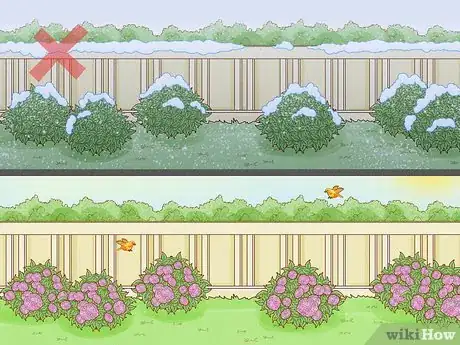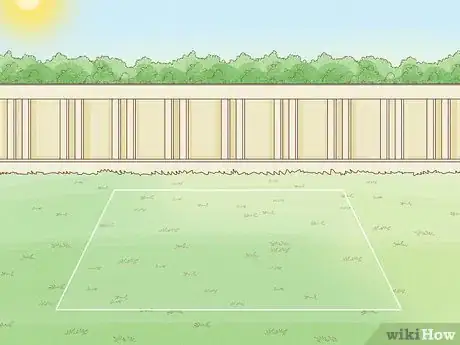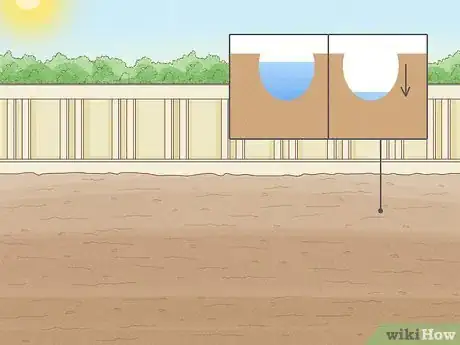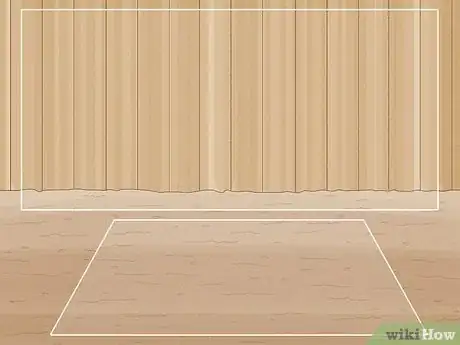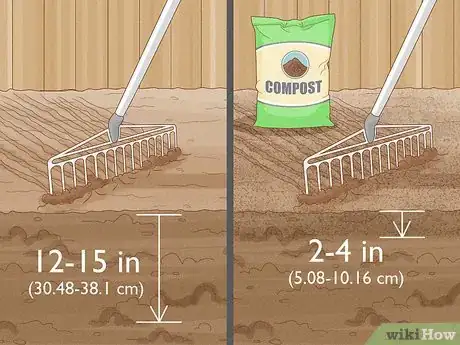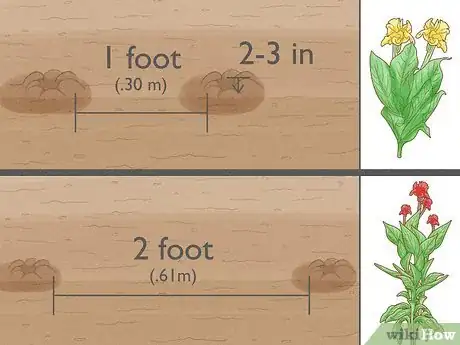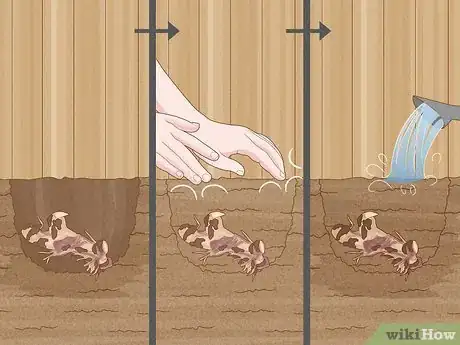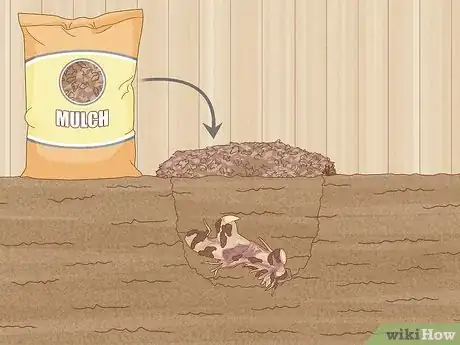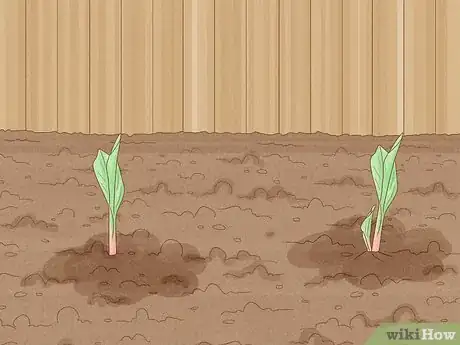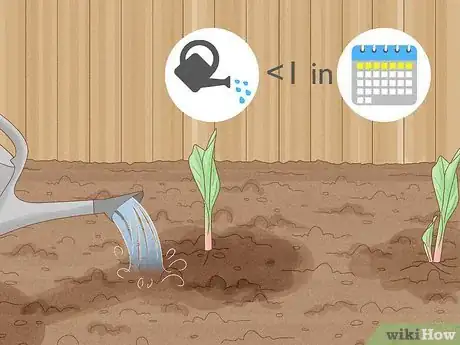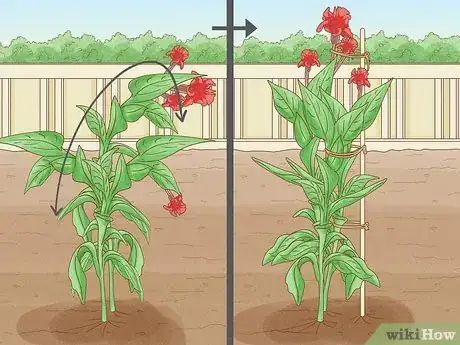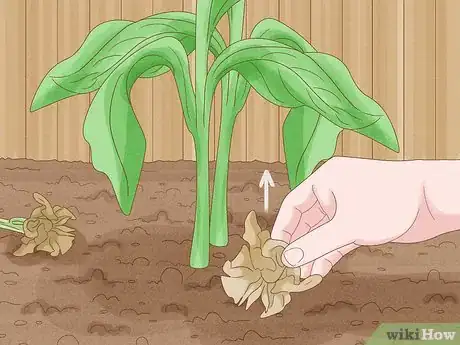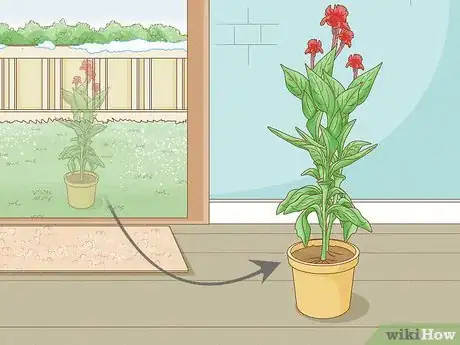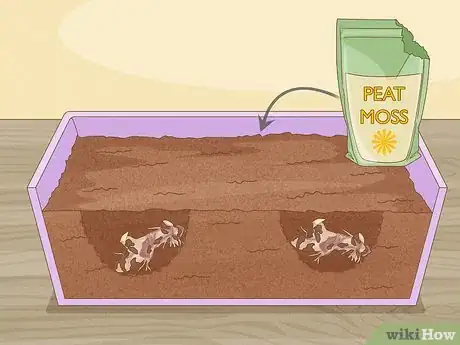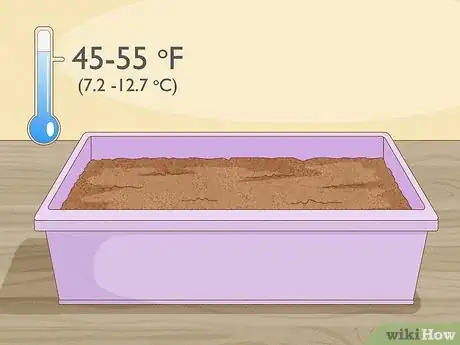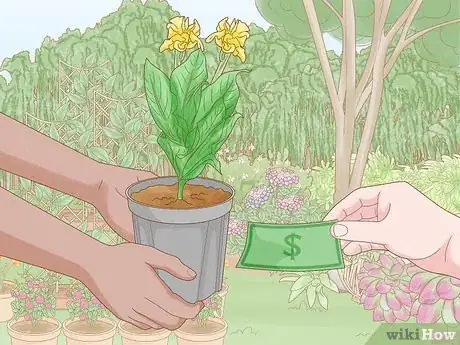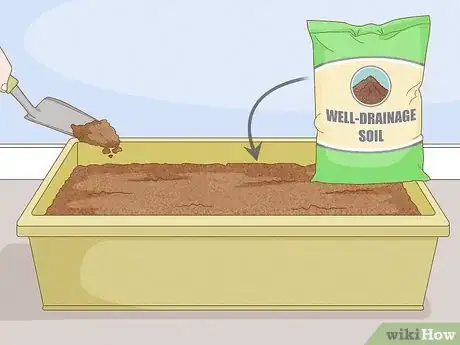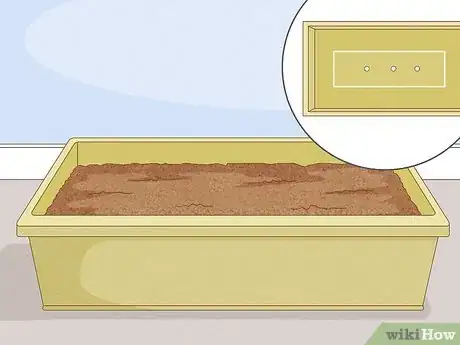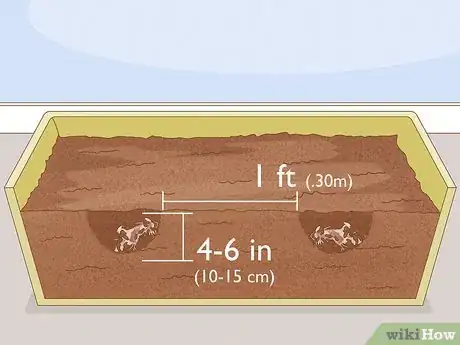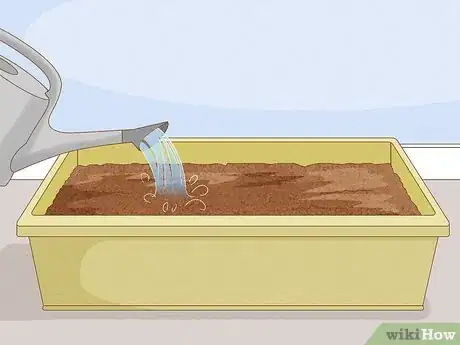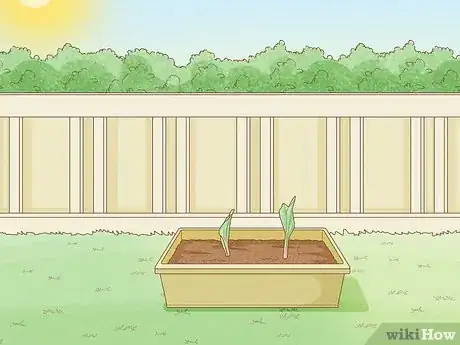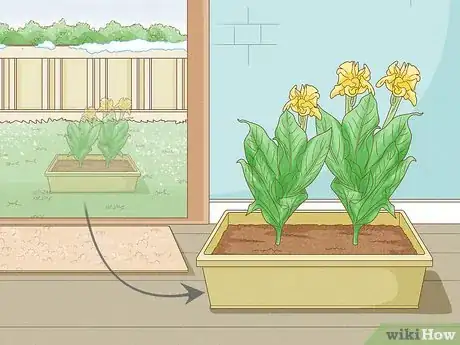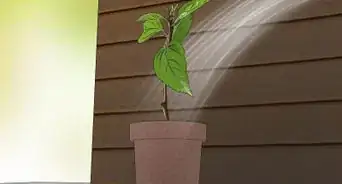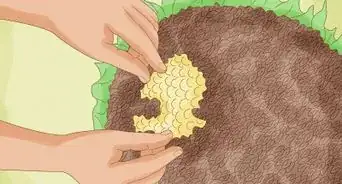wikiHow is a “wiki,” similar to Wikipedia, which means that many of our articles are co-written by multiple authors. To create this article, 12 people, some anonymous, worked to edit and improve it over time.
wikiHow marks an article as reader-approved once it receives enough positive feedback. In this case, 100% of readers who voted found the article helpful, earning it our reader-approved status.
This article has been viewed 174,042 times.
Learn more...
With their blooms of vibrant patterns and paddle-shaped leaves, canna lilies will add a riotous amount of color to any garden. Since they can be difficult to grow from seeds, cannas are usually grown from rhizomes, known as "tubers". Scroll down to Step 1 to start growing these lovely lilies.
Steps
Planting Your Cannas
-
1Wait until any threat of frost has passed before planting your cannas. Cannas are a warm weather plant that don’t do well in cold weather. Wait until spring to plant your cannas--when the soil becomes soft and warm from sunlight, its time to get planting.[1]
- If you live in a colder area where the warm season is rather short, you could consider starting your cannas in an indoor pot. See Part Three for how to care for indoor cannas.
-
2Look for a spot with full sunlight. As tropical plants, cannas require a lot of sun. A lot of sunlight will allow your cannas to bloom to their full extent--and that’s something you definitely want. Cannas are known for the bright, beautiful flowers and intricate and colorful leaf patterns. Give your plant the sun it needs and you will be sure to have an exquisite garden.Advertisement
-
3Look for a spot where the soil drains well. While cannas will survive in almost any soil, it does need to be able to drain. The way to tell if you have found a good spot is to check on the spot after a rain shower (or hose shower). If the soil still has puddles five or six hours after a shower, you will have to find another spot. While cannas do like moist soil, they don’t like soggy roots.
- If you don’t have another spot to plant you cannas, you can help your spot to dry by adding organic material to the spot. You can raise the level two or three inches using compost, peat moss, or ground bark--all of which you can buy at your local garden or yard supply store.
-
4Keep the wind in mind when selecting your spot. If you are going to plant one of the tall varieties of cannas, you will need to choose a spot where these tall beauties will be relatively protected from strong wind. In a strong wind, cannas stalks can snap or bend in a damaging way.[2]
-
5Loosen the soil to a depth of approximately 12 to 15 inches (30.48 to 38.1 cm). You can do this with a tiller or garden fork. Mix in a layer of compost that is 2 to 4 inches (5.08 to 10.16 cm) deep. The compost will give the soil an extra boost of nutrients that your cannas will appreciate.[3]
-
6Dig a 2 to 3 inch (5.08 to 7.62 cm) hole for each bulb. Place a single tuber (or rhizome) in the hole with the eye (or growing points) facing up. Plant additional tubers approximately 1 foot (.30 m) apart for dwarf to medium varieties and at least 2 feet (.61 m) apart for tall varieties.[4]
-
7Cover the holes and the tubers with soil. Press the soil down and water thoroughly. Watering the area will help to settle the soil around the tuber.
-
8Add a thin layer of mulch over the flowerbed. The mulch will help retain moisture and will also keep the weed population at bay.[5]
Caring for Outdoor Cannas
-
1Keep an eye out for sprouts. Your sprouts should begin to show their heads a couple of weeks after planting, though if you live in a colder climate it might take a week or two longer. Cannas need heat to help them begin growing. For optimum blooming, apply a fertilizer rich in nitrogen to cannas about once a month.
-
2Water your cannas regularly. Cannas need moist soil, so its important to water your cannas regularly. If you live in an area where rainfall is one inch or less (2.54 cm) each week, you will need to water your cannas once a week. If you find yourself in a dry spell, water whenever you notice the soil getting dry.[6]
-
3Give your taller cannas some support. If you notice that your taller cannas are a little droopy, tie them to stakes to help them grow and support their own weight. Learn how to stake your plants here.
-
4Pick away dead flowers. As your plant’s flowers bloom and fade away, remove the dead foliage. You can tell what is dead by looking for a faded brownish yellow color. Pick these away, taking care that you don’t disrupt the still living parts of the plant. Do not cut leaves until they yellow because they will continue to provide nutrients to the plant even when it is not blooming.[7]
-
5Move your cannas indoors after the first frost. If you live in an area that gets frost, you will need to dig up your rhizomes after the frost kills the foliage of your cannas. Cut the plants back so that they are six inches tall and carefully dig the rhizomes up from the ground.
- Some cannas specialists believe that you should let the rhizomes dry for several days before moving onto the next step.[8]
-
6Fill a plastic box with peat moss or perlite. Both peat moss and perlite can be purchased at your local garden supply store. Once you have filled the box, place each bunch of rhizomes in the box, making sure that each plants rhizomes don’t touch one another.
- You can also put them in a brown paper bag lined with peat moss or perlite if you don’t have a plastic box to spare.
-
7Store the boxes so that they are not sitting on the floor. You should pick a spot that can have a maintained temperature of 45 to 55 degrees F (7.2 to 12.7 degrees C). Check on them every once in a while. If you notice that the moss is getting dry, lightly spray it with water so that it gets slightly damp. Your cannas will go into hibernation during this time, and will be able to be replanted in the spring, just like the first time you planted them.[9]
Caring for Potted Cannas
-
1Consider buying dwarf cannas for your planter. Dwarf cannas grow to about three feet tall. They come in a variety of colors, such as the bright red Ambassador or the City of Portland, which is known for its salmon color. Regular cannas are much larger in size, so dwarf cannas tend to grow better when potted.[10]
-
2Use well-drained, good quality soil. Potted cannas will grow in almost any potting medium that can be purchased at a garden supply store--they’re really not very picky. However, it must be soil that drains well, as cannas don’t do well with soggy roots and could develop mold.
-
3Purchase a pot with drainage holes. You will also have to choose your container based on the size of the variety of canna you are choosing to plant. If you are not sure how large your specific canna can grow, run an online search or ask someone to help you at your garden supply store.[11]
- Remember, you can plant your cannas with other plants in your container, but just remember that all of the plants in one container must have the same water and sunlight needs or else they will not do very well.
-
4Dig holes that are 4 to 6 inches deep (10 to 15 cm). Plant your rhizomes (or tubers) in these holes, making sure that each dwarf or medium rhizome is at least 1 foot (.30 m) away from the next rhizome, unless you are planting them in a container, in which case you can often fit two or three tubers in a container. If you have a larger variety of canna rhizome, make sure that there is at least 2 feet (.61 m) distance between rhizomes. Make sure that the growing points (or eyes of the tuber) or pointing up.[12]
-
5Water your cannas. You should water your cannas right after you plant them so that the soil will settle around them and they can start to grow. When they have begun to sprout, water your plant as much as needed, keeping an eye on the soil to make sure that it is always relatively moist (though not soaking wet).
-
6Make sure your potted cannas get plenty of sunlight. It is recommended that you bring your cannas outside so that they can get full sunlight during the warm months. If you do choose to keep them inside, make sure they are near a window that provides them with bright sunlight for most, if not all, of the day.
-
7Bring your pot inside before the first frost. If you did bring your cannas outside for the summer months, make sure that you bring them back inside before the first frost has the chance to harm them. Store them indoors where the temperature stays at around 45 and 60 degrees F (7.2 to 15.5 degrees C).[13]
- You can also dig up the rhizomes and store them in a plastic box with peat moss or perlite.
Community Q&A
-
QuestionCan the seeds from a cannas flower be planted?
 Community AnswerYes, but you will need to nick the shell. I use nail clippers. Then let them sit in a wet paper towel for a few days. You will see them start to grow. Then plant them in soil & enjoy!
Community AnswerYes, but you will need to nick the shell. I use nail clippers. Then let them sit in a wet paper towel for a few days. You will see them start to grow. Then plant them in soil & enjoy! -
QuestionI have worms on the leaves of my cannas. How do I get rid of them?
 Community AnswerYou might try Epsom salts. Also, as cannas are extremely chemical resistant, you could just lightly spray them with a commercial pesticide.
Community AnswerYou might try Epsom salts. Also, as cannas are extremely chemical resistant, you could just lightly spray them with a commercial pesticide. -
QuestionHow can I get my Cannas to grow 2 meters high?
 Community AnswerDon't water it too much, just enough so that it'll grow and get lots of sunlight.
Community AnswerDon't water it too much, just enough so that it'll grow and get lots of sunlight.
Things You'll Need
- Shovel
- Canna tubers
- Compost
- Mulch
- Plastic container
- Peat moss or perlite
References
- ↑ http://www.easytogrowbulbs.com//g-32-canna-planting-guide.aspx
- ↑ http://www.garden.org/plantguide/?q=show&id=2039
- ↑ http://www.garden.org/plantguide/?q=show&id=2039
- ↑ http://www.easytogrowbulbs.com//g-32-canna-planting-guide.aspx
- ↑ http://www.garden.org/plantguide/?q=show&id=2039
- ↑ http://www.almanac.com/plant/cannas
- ↑ http://www.gardeners.com/Growing-Cannas/7127,default,pg.html
- ↑ http://www.easytogrowbulbs.com//g-32-canna-planting-guide.aspx
- ↑ http://www.almanac.com/plant/cannas
About This Article
Cannas are easy to grow as long as you live in a warm climate that gets lots of sunlight. While sprouting cannas seeds can be difficult, you can easily buy tubers from your local nursery to plant. Once you have a tuber, plant it in a spot where the soil drains well and there isn’t too much wind, since cannas can be easily knocked over. Add a thin layer of mulch on top to help prevent weeds. You’ll need to water your cannas about once a week and pick away any dead flowers to keep it growing healthily. To learn how to plant cannas indoors, read on!
